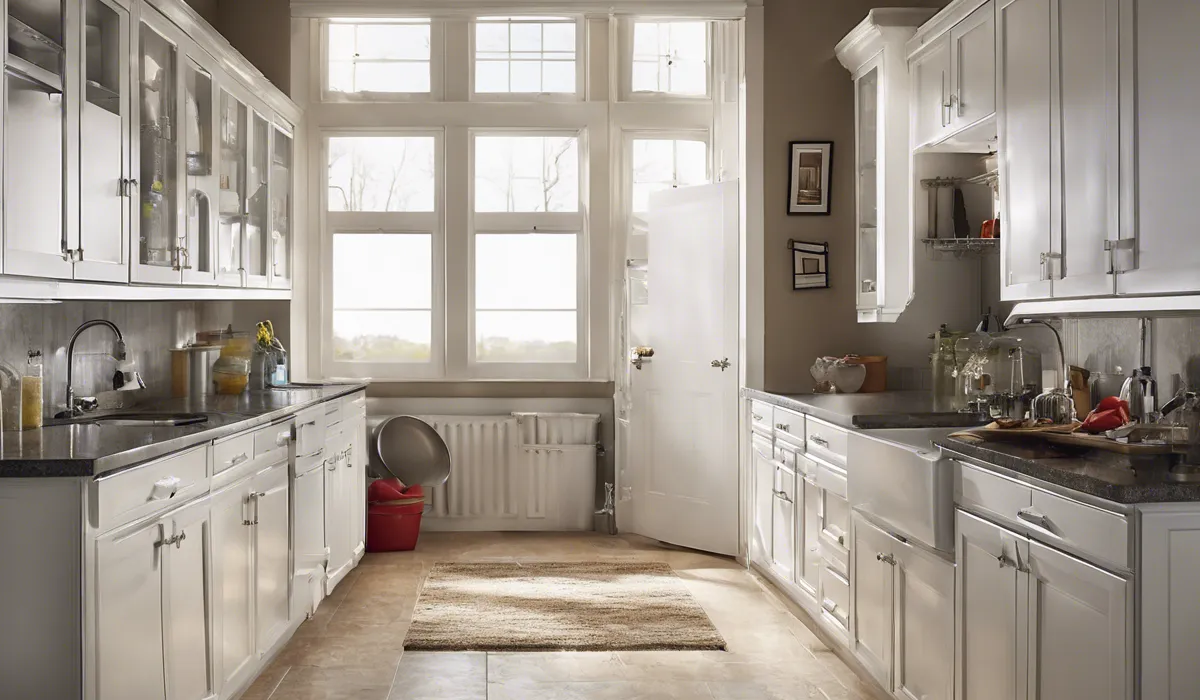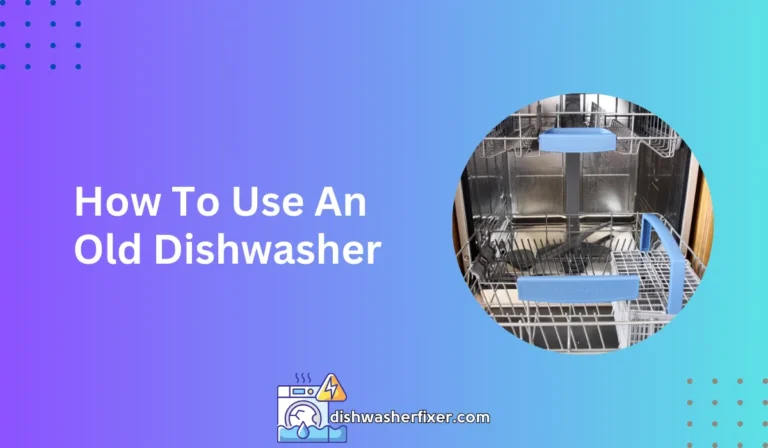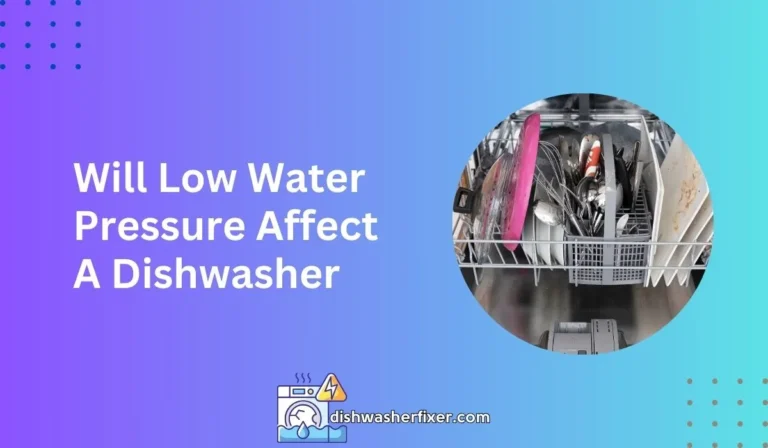Why is Dishwasher Backing Up into Sink? Solve It Now!
A dishwasher backs up into the sink due to a clogged shared drain line or air gap, a blocked garbage disposal, or a malfunctioning check valve. Clear blockages and ensure the air gap is functioning to resolve this issue.
Common Causes of Dishwasher Back-Up

Clogged Air Gap or High-Loop Issue
One of the primary reasons a dishwasher might start backing up into the sink is due to a clogged air gap or an improperly installed high loop. The air gap is a small cylindrical fixture typically mounted on the countertop near the sink.
It prevents contaminated water from flowing back into the dishwasher. When it becomes clogged with food debris or soap scum, it can’t perform its job, leading to backflow.
Similarly, a high loop, which is a part of the dishwasher drain hose configured in a high arc, can fail if not correctly positioned, resulting in similar backflow issues.
Blockage in the Drain Hose
The drain hose, which connects your dishwasher to the garbage disposal or directly to the drain, can become obstructed.
This blockage might be due to food particles, glass shards, or other debris that has accumulated over time.
When the pathway is blocked, water cannot exit the dishwasher properly and might back up into the sink. Regular inspection and cleaning are necessary to ensure that this integral part of your dishwasher’s drainage system is clear.
Problems with the Garbage Disposal
Often, dishwashers are connected to the same drain as the garbage disposal. If the garbage disposal is clogged or not working correctly, it can cause water to back up into the sink when the dishwasher drains.
Garbage disposals can become clogged with food waste or other items that should not be disposed of in this manner. Ensuring that your garbage disposal is functioning correctly is a crucial step in preventing dishwasher back-up.
Clogged Sink Drain
A sink drain clogged with food scraps, grease, or other debris can also lead to water backing up from the dishwasher.
Since the sink and dishwasher often share the same drain pipe, any blockages in the sink drain can affect your dishwasher’s ability to empty water effectively.
Keeping the sink drain clear is essential for the smooth operation of both your sink and dishwasher.
Faulty Check Valve
The check valve is a crucial component that prevents wastewater from re-entering the dishwasher once it has been pumped out.
If this valve is damaged or malfunctioning, it can cause water to flow back into the dishwasher and potentially up into the sink.
Regular checks on the check valve can prevent this issue from occurring and ensure the dishwasher drains as it should.
Troubleshooting Steps to Resolve the Issue

Inspecting and Cleaning the Air Gap
To address a clogged air gap, first, remove the cap and inspect it for any visible debris. If you find any, clean it out thoroughly.
You might need to use a small brush or a cloth to remove stubborn blockages. Ensuring that the air gap is free from obstructions is a simple yet effective way to prevent dishwasher back-up.
Checking and Clearing the Drain Hose
Examine the drain hose for kinks or bends that could prevent water from flowing properly. If the hose appears to be in good shape, disconnect it and flush it out with water to remove any clogs.
You might need to use a straightened coat hanger or a specialized cleaning tool to dislodge any stubborn blockages within the hose.
Running and Maintaining the Garbage Disposal Properly
Ensure that you run your garbage disposal regularly to prevent build-up that could back up into the dishwasher.
Avoid disposing of hard-to-grind items like bones or fibrous vegetables, which can cause clogs. Periodic cleaning with ice cubes and salt can help keep the blades sharp and the disposal running smoothly.
Using a Plunger or a Plumber’s Snake on the Sink Drain
If you suspect a clogged sink drain, use a plunger to try and dislodge any blockages.
If plunging doesn’t work, a plumber’s snake can be inserted into the drain to break up or retrieve any obstructions. Be careful when using these tools to avoid damaging your pipes.
Examining and Replacing the Check Valve if Necessary
Locate the check valve, which is usually near the bottom of the dishwasher, and inspect it for damage or wear.
If the valve is faulty, it will need to be replaced. This task might require some technical knowledge and tools, so consider contacting a professional if you’re not comfortable doing it yourself.
Preventative Measures to Avoid Future Back-Ups

Regular Cleaning and Maintenance Routines
Establishing a regular cleaning and maintenance routine for your dishwasher and sink is the best way to prevent back-ups.
This includes cleaning filters, inspecting hoses, and keeping the garbage disposal clear. Regular attention can help catch issues early before they become serious problems.
Proper Use of the Garbage Disposal
Understanding what can and cannot be processed by your garbage disposal can prevent clogs.
Avoid disposing of oils, grease, and non-food items, as these can damage your disposal and cause blockages. Use cold water when running the disposal to solidify any grease or oils, making them easier to grind.
Flushing the Drain with Hot Water or Vinegar and Baking Soda
Regularly flush your drain with hot water to help dissolve and dislodge any grease or buildup.
Additionally, using a mixture of vinegar and baking soda can create a chemical reaction that helps clear out clogs naturally. This eco-friendly solution can be used periodically to maintain clear drains.
Avoiding the Disposal of Grease and Large Food Particles in the Sink
Grease and large food particles can solidify and accumulate in your pipes, leading to blockages.
Dispose of grease in the trash and scrape plates into the bin before washing them in the sink or placing them in the dishwasher. This simple habit can go a long way in preventing sink and dishwasher back-ups.
Periodically Checking for and Addressing Minor Clogs Before They Worsen
Be proactive about your plumbing health by periodically checking for minor clogs and addressing them before they become more significant issues.
If water begins to drain slowly from your sink or dishwasher, it could be a sign of a forming clog. Address these issues promptly to keep your system running smoothly.
FAQs About Dishwasher Backing Up Into Sink
Why does my dishwasher back up into my sink?
A dishwasher may back up into your sink due to a clogged shared drain line, an obstructed air gap, a blockage in the garbage disposal, or a faulty check valve causing water to reverse flow.
How can I fix a dishwasher causing sink backup?
To fix a dishwasher causing sink backup, clear any blockages in the shared drain line or garbage disposal, and ensure that the air gap, if present, is clean and functioning properly.
What is an air gap, and why is it important for preventing sink backup?
An air gap is a device that prevents dirty water from the sink from flowing back into the dishwasher; it’s important as it helps maintain sanitary conditions and prevents cross-contamination.
Can a blocked garbage disposal cause my dishwasher to back up into the sink?
Yes, a blocked garbage disposal can cause water to back up into the sink from the dishwasher, as they often share the same drainage pipe.
What should I do if clearing blockages does not stop my dishwasher from backing up into the sink?
If clearing blockages doesn’t resolve the issue, check for a malfunctioning check valve and consider consulting a professional plumber to diagnose and fix any underlying problems.
Final Thoughts
A dishwasher backing up into the sink typically stems from a clogged shared drain line, an obstructed garbage disposal, or a faulty check valve. To fix the issue, it is essential to clear any blockages and check the air gap to ensure it’s functioning properly.





